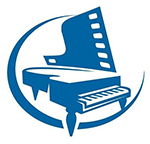TOP TEN 20TH CENTURY REPERTOIRE COLLECTIONS AND PIECES FOR THE DEVELOPING PIANIST by Dr. CAROL ANN BARRY
TEN COLLECTIONS:
FIRST STEPS FOR BEGINNING PIANISTS (1ST 2 YEARS) Bartok and Kabalevsky
- Bartok-The First Book for Pianists, Willard Palmer, Editor, Alfred Pub.
- this resource is a wonderful supplement to method books, and can be started right after the primer, or level one method book. The collection begins with 8 short melodies in five finger positions and is taken from First Term at the Piano.
- Bartok-Mikrokosmos, books one and two
- folk tune based, this series of pieces (153) are progressive studies, and can be used even before the primer level is completed. Another excellent resource that can be used continuously or can be integrated throughout the school year.
- Kabalevsky-The First Book for Pianists, Willard Palmer, Editor, Alfred Pub.
- contains some of the earliest pieces Kabalevsky wrote for young pianists. Many of these, and others, can be found in first year repertoire books published by most of the major music companies.
THE INTERMEDIATE YEARS-Kabalevsky, Gretchaninoff, Persichetti
Early to Mid-Intermediate:
- Gretchaninoff Children’s Book, Opus 98 Alfred Pub.
- collection of fifteen tuneful pieces, appropriate for the early intermediate student. Very helpful for teaching phrasing, shape and melodic line. Can be used successfully for recital literature by grouping into sets of three or four pieces.
- Vincent Persichetti-Little Mirror Book for Piano, Elkan-Vogel, Inc.
- a collection of five pieces, each portraying a different type of mirror. The contrary motion between the hands, makes this collection a possibility for the early to mid-intermediate student. An excellent resource for introducing dissonance to the younger student. Extensive use of accidentals can also make this a valuable reading resource.
- Kabalevsky-30 Children’s Pieces, Op. 27 , Boosey and Hawkes Pub.
- the collection contains 30 pieces that range from mid-intermediate to advancing intermediate students. See attached Teaching Notes by John York. Pieces can be grouped to make delightful sets for performance.
- Robert Starer-Sketches in Color, Books 1 and 2, MCA Publishing Co.
- Book 1 is more accessible than book 2. Collection introduces changing time signatures, and time signatures such as 7/8. Pieces can be played as a first set for an excellent longer set (10 minutes) for the upper intermediate, or early advanced student. Pieces are often performed individually or in pairs
Mid to Upper Intermediate:
- Tcherepnin-Bagatelles, Opus 5, Alfred Masterwork Edition
- Ten bagatelles, mostly 2 pages in length. An excellent introduction to Russian piano music and harmonies. The first bagatelle can be successful with many mid-intermediate students. Rhythmic figures across bar-lines are an excellent introduction to 20th century rhythmic techniques. Set can be performed as a set of grouped in any number of interesting sets, blending colors and tempo to create attractive sets.
- Copland-The Young Pioneers, Carl Fischer Pub.
- Single piece that teaches intermediate students how 7/8 can be grouped both as 3 plus 4, or 4 plus 3. Continuous dialogue between treble and bass clefs. Excellent introduction to Copland, especially for boys.
- Copland-Midsummer Nocturne, Boosey and Hawkes
- Mid-intermediate piece that portrays Copland’s poetic side.
